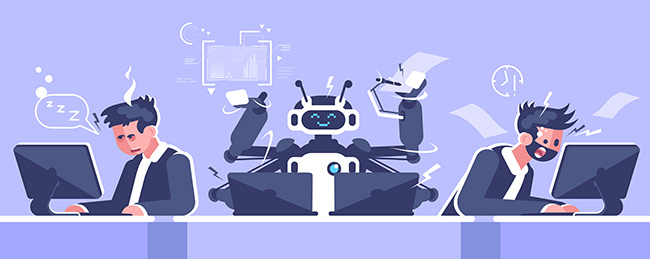
Having read about the unlimited Forex opportunities and huge profits that large investors receive, many people decide to start working in the foreign exchange market and try themselves in the role of a trader. When a novice trader registers a trading account and gets started, he immediately faces a choice between manual or automated trading. In this article, we will talk about these two types of trading and try to find out what are the pros and cons of each of these trading approaches.
Manual trading
Manual trading or self-trading involves making independent trading decisions. And while manual trading offers lots of profit-making opportunities, the profit of a trader, in this case, will entirely depend on his trading skills and experience. Manual trading can bring maximum income in the Forex market since only the trader himself has full control over his money.
Manual trading implies refusing to use special tools and software that make decisions instead of the trader and don't require his constant presence. For example, if some indicator gives a signal that it's the right moment to close a trade, the final decision to exit the market is still made by the trader.
Pros and cons of manual trading
The main advantages of manual trading are:
- manual trading allows a trader to take into account all the factors that currently affect the market. Here we are talking about news and technical aspects of trading;
- when trading manually, a trader can react quickly and make adjustments to his trade, according to updated and relevant information.
However, this trading approach has its disadvantages too. Among them are:
- to use manual trading effectively, it is necessary to have special knowledge and experience, beginner traders usually lack. It also takes quite a bit of time to get enough theoretical knowledge;
- it may be difficult for beginners to start trading on a live account, especially when there is a large amount of money on the balance. It's one thing to risk virtual funds on your demo account, and another to watch your deposit vanishing in one unlucky trade;
- trading manually on smaller time frames can be challenging both for beginners and professional traders. With short-term time frames, you need to constantly sit at your computer and stay vigilant, following the news updates, market releases, and charts.
Automated trading
In contrast to the above-mentioned trading approach, where the trader performs trading transactions by himself, automated trading, as you may have guessed, is conducted by special software or a trading robot. also called an Expert Advisor (EA). The Expert Advisor is based on an algorithm and opens trades strictly according to predefined parameters.
You don't need to monitor your trading 24/7, looking for potentially profitable entry points. A trading robot won't be overwhelmed by emotions, such as greed and fear, which often lead to hasty trading decisions and bad trading outcomes. Trading is carried out automatically – entry and exit points, money management – everything is already accounted for and calculated by the system. The software is also more reliable and accurate. Unlike a human being, a robot won't make random errors and mistakes. It won't enter a wrong value or put a decimal point in the wrong place, just because it got tired of spending hours watching charts.
Expert Advisors are quite flexible, but they still function within the limits of their algorithm. All you need is configure your trading robot once, set the desired parameters, and then it'll trade independently.
The Expert Advisor will identify chart patterns, look for trends and reversal points. The robot can trade at any time, in any market, which, in our opinion, is a huge advantage.
There are different types of Expert Advisors:
- Trend EAs;
- Scalper EAs;
- Multicurrency EAs;
- Hybrid or multi-use EAs.
While trading robots have a lot of advantages, they also have their shortcomings. To be more precise, there's only one main disadvantage – the advisor's flexibility is limited by its algorithm. That is, the software will not be able to react to those changes in the market (and there can be many of them) that haven't been included in the algorithm. This means that at one point you can find your account wiped out.
To avoid this, you need to stay updated on what is happening in the world and on the market, and how your EA works. You don't need to oversee the work of your trading robot all the time, just keep an eye on the trading robot and how it functions in force majeure situations.
So, which one to choose: automated or manual trading?
Experienced traders believe that the best solution would be to use the combination of both. Try not to stick to manual or automated trading exclusively. While it's great to use modern technologies to achieve trading success in the foreign exchange market, don't rely on your trading robot entirely. Use your head too, when the situation requires experience and intuition.
Provided by AMarkets